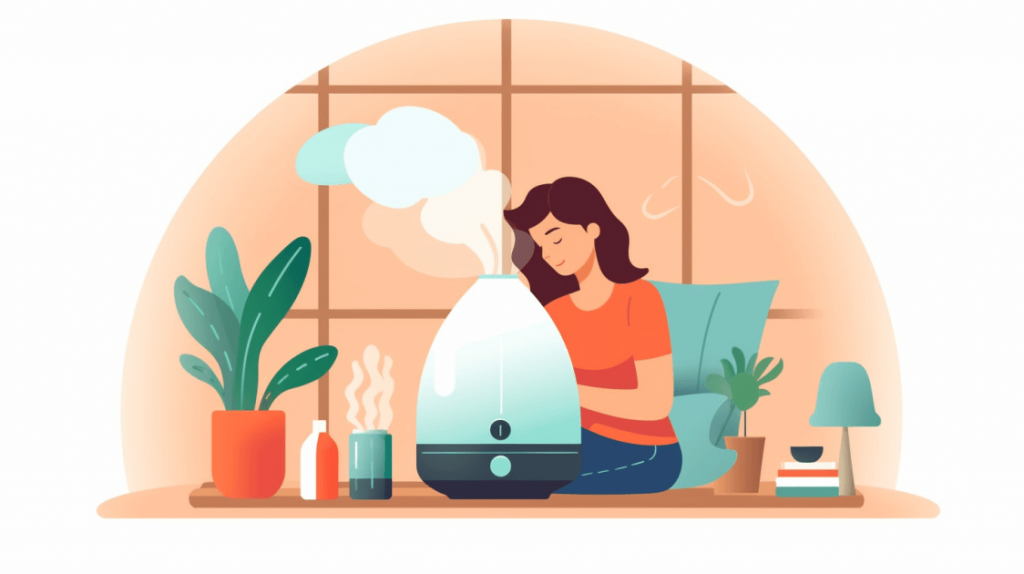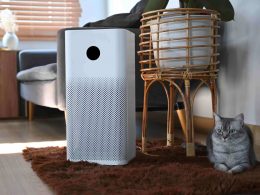Welcome to another insightful post from Home Air Authority, your trusted source for all matters of indoor air quality. We are dedicated to providing valuable information and guiding you to make informed decisions when it comes to improving the air you breathe within your home. Today, we’re turning our attention to a component that plays a vital role in keeping our indoor air clean yet often goes unnoticed: the pre-filter.
A large part of our mission here at Home Air Authority involves educating consumers about the various components of air purifiers, humidifiers, and dehumidifiers—how they work, how to maintain them, and their impact on the devices’ overall performance. One such component integral to the functioning of these devices is the pre-filter. This seemingly small and simple part carries a big responsibility when it comes to preserving your device’s performance and maintaining the air quality in your home.
Stay with us as we delve deeper into the world of pre-filters, shedding light on their function, their importance, and why it’s crucial for every homeowner to understand their role in maintaining a healthier and cleaner indoor environment. Let’s breathe better together.
Understanding the Basics
Before we can appreciate the benefits of a pre-filter, it’s important to understand what it is and how it works. Simply put, a pre-filter is the first line of defense in air purifiers, humidifiers, and dehumidifiers. It’s designed to capture large airborne particles before they reach the main filter of your device.
Think of it as the goalkeeper in a soccer match. The pre-filter intercepts and holds onto larger particles like dust, hair, pet dander, and other sizable pollutants that could potentially clog the main filter. By doing so, it preserves the lifespan of the main filter and enables it to focus on trapping smaller, more harmful particles such as smoke, pollen, and bacteria.
It’s important to note that not all devices have a pre-filter, and in some cases, the pre-filter is built into the primary filter. However, having a separate pre-filter is often considered advantageous as it enhances the overall effectiveness and efficiency of your air purifying device.
In the next section, we will dive into the specific benefits of pre-filters and why they’re a vital part of maintaining a clean and healthy indoor atmosphere. Join us on this journey as we unpack more about the essential role of pre-filters.
Benefits of Pre-Filters
Now that we have a better understanding of what pre-filters are and their role in air purifying devices, let’s explore the specific benefits of having a pre-filter.
Enhanced Efficiency
By capturing large particles that could easily clog the main filter, pre-filters boost the efficiency of your air purifying device. With a pre-filter, the primary filter can focus on smaller, harder-to-capture particles, increasing the overall performance of the device.
Extended Lifespan of the Main Filter
The main filters in air purifying devices are typically more expensive to replace than pre-filters. By reducing the burden on the main filter, pre-filters can extend its lifespan, saving you money in the long run.
Improved Air Quality
The combined action of a pre-filter and main filter ensures a comprehensive filtration process, leading to cleaner and healthier indoor air. The pre-filter eliminates large contaminants, while the main filter takes care of smaller pollutants.
Cost-Effective Maintenance
Pre-filters are typically easier and cheaper to clean or replace than primary filters. Regular maintenance of the pre-filter can prevent costly repairs or replacements of the main filter and keep your device running smoothly for longer.
In the next section, we will look at how pre-filters function in different devices, such as air purifiers, humidifiers, and dehumidifiers. Stay with us as we continue to demystify the role of pre-filters in our quest for cleaner, healthier indoor air.
Pre-Filters in Different Devices
Understanding how pre-filters work within different devices can give us a better perspective on their importance in maintaining indoor air quality. Here’s a closer look:
Air Purifiers
In an air purifier, the pre-filter plays a significant role in the multi-stage filtration process. As the initial stage of filtration, it captures large particles such as dust, hair, and pet dander, preventing them from reaching the more delicate and often more expensive filters, like HEPA or activated carbon filters. This helps to extend the lifespan of these subsequent filters and ensures that they can function effectively in capturing smaller particles like pollen, mold spores, or smoke.
Humidifiers
In a humidifier, the pre-filter’s role varies depending on the type of device. In evaporative humidifiers, the pre-filter is used to remove minerals and other contaminants from the water before it is evaporated into the air. This prevents “white dust” caused by minerals in the water from being dispersed into your indoor air. In ultrasonic humidifiers, a pre-filter might be used in models that also have a purifying function to ensure a clean, healthy mist.
Dehumidifiers
Dehumidifiers, like air purifiers, often incorporate pre-filters to remove larger airborne particles from the air before it passes through the main dehumidifying mechanism. This process not only cleans the air but also prevents these particles from building up within the device and impairing its ability to reduce humidity effectively.
The use of pre-filters in these devices reflects their pivotal role in ensuring optimal performance and durability. In the next part, we’ll discuss how to maintain your pre-filter, which is crucial for the longevity of your air quality devices and the health of your indoor environment.
How to Maintain Your Pre-Filter

Regular maintenance of your pre-filter is essential to ensure the longevity and optimal performance of your air purifiers, humidifiers, or dehumidifiers. Here are some important guidelines to follow:
- Cleaning
Depending on the type of pre-filter, it may be washable or require vacuuming. Refer to the manufacturer’s instructions for the recommended cleaning method. Generally, washable pre-filters can be rinsed under running water or gently washed with mild soap. Allow the pre-filter to dry completely before reinserting it into the device.
- Replacement
Some pre-filters are designed for one-time use and need to be replaced periodically. Check the manufacturer’s recommendations for the recommended replacement interval. It’s important to follow these guidelines to ensure the pre-filter continues to capture large particles effectively.
- Regular Inspection
Periodically inspect your pre-filter for any signs of damage or clogging. If the pre-filter is torn, damaged, or heavily clogged, it’s time for a replacement. A damaged or excessively dirty pre-filter may hinder proper airflow and reduce the effectiveness of the device.
- Maintenance Schedule
Establish a maintenance schedule for your pre-filter based on the manufacturer’s recommendations. This ensures that you stay on top of maintenance tasks and keep your device operating at its best.
Remember, maintaining your pre-filter not only ensures optimal performance but also contributes to the overall air quality in your home. Regular cleaning or replacement of the pre-filter will keep your device running efficiently and effectively.
In the next section, we will discuss signs that indicate your pre-filter needs maintenance or replacement. Stay tuned to ensure you can identify when it’s time to take action for cleaner, healthier air.
Signs Your Pre-Filter Needs Maintenance or Replacement
To ensure that your air purifiers, humidifiers, or dehumidifiers are operating at their best, it’s important to recognize the signs that indicate your pre-filter requires maintenance or replacement. Here are some common signs to watch out for:
- Visible Dirt or Debris
If you notice a significant amount of visible dirt, dust, or debris on the surface of your pre-filter, it’s a clear indication that it’s time for cleaning or replacement. A dirty pre-filter hinders proper airflow and reduces its filtering capabilities.
- Reduced Airflow
If you observe a decrease in the airflow of your device, it could be due to a clogged or dirty pre-filter. Restricted airflow can impact the overall performance of your device, resulting in lower efficiency and decreased air circulation.
- Strange Odors
An unpleasant or musty odor coming from your air purifier, humidifier, or dehumidifier might indicate a dirty or contaminated pre-filter. As the pre-filter captures larger particles, it can also trap odorous substances. Cleaning or replacing the pre-filter can help eliminate these odors and restore fresh air in your home.
- Decreased Device Performance
If you notice that your air purifier, humidifier, or dehumidifier is not performing as effectively as it used to, it could be a sign that the pre-filter needs attention. A compromised pre-filter can lead to reduced filtration efficiency and compromised air quality.
Regularly monitoring and addressing these signs of a worn-out or clogged pre-filter is crucial to maintain the performance and effectiveness of your air quality device. By promptly addressing these issues, you can ensure that your device continues to provide you with clean, healthy air.
In the next section, we will guide you on how to select the right pre-filter for your device, ensuring optimal compatibility and performance.
Selecting the Right Pre-Filter
Choosing the right pre-filter for your air purifiers, humidifiers, or dehumidifiers is essential to maintain their compatibility and maximize their performance. Here are some factors to consider when selecting a pre-filter:
- Device Compatibility
Ensure that the pre-filter you choose is compatible with your specific make and model of air purifier, humidifier, or dehumidifier. Manufacturers often provide compatible pre-filter options for their devices, so refer to the device’s user manual or contact the manufacturer for guidance.
- Size and Fit
Pre-filters come in different sizes and shapes. It’s important to select a pre-filter that fits properly within your device’s filter compartment. Improperly fitting pre-filters can lead to air leakage, reduced filtration efficiency, or even damage to the device.
- Filter Efficiency
Consider the filter efficiency rating of the pre-filter. Look for pre-filters that are capable of capturing a wide range of larger particles such as dust, pet dander, and pollen. Higher efficiency pre-filters will ensure better air quality and increased longevity of your primary filter.
- Maintenance and Replacement Cost
Evaluate the cost of maintenance and replacement for the pre-filter. Consider whether it is washable or requires replacement and factor in the associated costs over time. It’s important to strike a balance between cost-effectiveness and filter performance.
- Brand Reputation
Opt for pre-filters from reputable brands known for their quality and reliability. Research customer reviews and ratings to gain insights into the performance and durability of different pre-filter options.
By taking these factors into account, you can make an informed decision and select the right pre-filter that meets the specific requirements of your device and provides efficient and effective air filtration.
Conclusion
In the pursuit of clean and healthy indoor air, pre-filters play a vital role in air purifiers, humidifiers, and dehumidifiers. These often overlooked components act as the first line of defense, capturing larger particles and protecting the main filter or mechanism of the device.
Throughout this blog post, we’ve explored the basics of pre-filters, their benefits, and their role in different air quality devices. We’ve discussed how pre-filters enhance efficiency, extend the lifespan of main filters, and contribute to improved air quality in our homes.
Remember, regular maintenance of your pre-filter is crucial. Cleaning or replacing the pre-filter when necessary ensures optimal performance and prevents a decline in air quality. By adhering to a maintenance schedule and promptly addressing any signs of wear or clogging, you can ensure that your air purifiers, humidifiers, or dehumidifiers continue to function effectively.
If you’re unsure about which pre-filter to choose, consult the manufacturer’s recommendations, consider factors such as device compatibility, size and fit, filter efficiency, and maintenance costs. Opting for reputable brands will also ensure that you receive a high-quality product.
At Home Air Authority, we are committed to providing you with valuable information and helping you make informed decisions about improving your indoor air quality. Visit our website for more in-depth guides, reviews, and recommendations on the best air purifiers, humidifiers, and dehumidifiers available in the market.
Let’s prioritize clean and healthy indoor air together, starting with the often-underestimated but essential pre-filter. Breathe easier, live healthier, and create a more comfortable home environment for you and your loved ones.
Thank you for joining us on this journey.
FAQs (Frequently Asked Questions)
1. What is the purpose of a pre-filter?
A pre-filter serves as the first line of defense in air purifiers, humidifiers, and dehumidifiers. Its primary purpose is to capture larger particles, such as dust, pet dander, and hair, before they reach the main filter or mechanism of the device. By doing so, it helps extend the lifespan of the main filter, enhances the device’s efficiency, and contributes to cleaner indoor air.
2. How often should I clean or replace the pre-filter?
The frequency of cleaning or replacing the pre-filter depends on several factors, including the device type, the level of airborne pollutants in your environment, and the manufacturer’s recommendations. Some pre-filters are washable and require cleaning every few weeks or months, while others are disposable and need replacement every few months. It’s important to consult the manufacturer’s instructions or guidelines specific to your device for the recommended cleaning or replacement schedule.
3. Can I use the device without a pre-filter?
While some devices may function without a pre-filter, it’s generally recommended to use one whenever possible. Pre-filters play a crucial role in maintaining optimal performance and prolonging the lifespan of the main filter or mechanism. Without a pre-filter, larger particles can accumulate in the device, leading to reduced efficiency, increased maintenance needs, and potentially impacting the device’s overall effectiveness in improving air quality.
4. Can I use a pre-filter from a different brand or model?
It’s best to use pre-filters recommended by the manufacturer of your specific device. Different brands and models may have variations in pre-filter sizes, designs, and compatibility. Using a pre-filter from a different brand or model could result in improper fitting, reduced efficiency, or even damage to the device. Refer to the manufacturer’s guidelines or consult customer support for the appropriate pre-filter for your device.
5. How do I know if my pre-filter needs maintenance or replacement?
Signs that your pre-filter needs maintenance or replacement include visible dirt or debris accumulation on the surface, reduced airflow from the device, unpleasant odors, or a noticeable decrease in device performance. Regularly inspecting the pre-filter and following the manufacturer’s guidelines for maintenance will help you identify when it’s time to clean or replace the pre-filter.
Remember, if you have specific questions or concerns about your device’s pre-filter, it’s always best to refer to the manufacturer’s instructions or reach out to their customer support for accurate and device-specific information.










